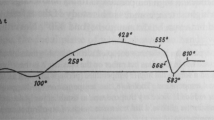Abstract
We simulate the fractal dimensions (D) of glass-ceramics resulting from different glass microstructures, at their percolation thresholds. We consider only crystallisation in glasses resulting from phase separation by nucleation. Phase separation may occur at a lower temperature or at the same temperature at which crystallisation takes place. We have studied both cases. The structure-property relationship of such glass-ceramics is dictated by the evolution of the structure of crystalline phase percolation cluster. At the percolation threshold the structure of the percolation path may be quantified by its fractal dimensionality (D). The value of D displays universal behaviour for a system in the thermodynamic limit. However, it deviates owing to finite size effects. Our simulations suggest that these deviations for a given system size depend on the nature of the glass microstructure. As the value of D reaches Euclidean dimension, the system attains more compact percolation cluster. This has invariably occurred in the present investigation for fine crystalline phase microstructure.
Similar content being viewed by others
References
W. Haller, J.Chem.Phys. 12 (1965) 686.
P. F. James, in “Advances in Ceramics,” Vol. 4, edited by J. H. Simmons, D. R. Uhlmann and G. H. Beall (American Ceramic Society, Columbus, Ohio, 1982).
D. R. Clarke, J.Amer.Ceram.Soc. 75 (1992) 739.
R. Zallen, “The Physics of Amorphous Materials” (Wiley, New York, 1983) Chap. 3.
Richard F. Voss, in “The Science of Fractal Images” edited by Heinz-Otto Peitgen and Dietmar Saupe (Springer-Verlag, 1988) Chap. 1.
D. Stauffer and A. Aharony, “Introduction to Percolation Theory” (Taylor and Francis, London, 1992) Chap. 3.
I. Sinha, Ph.D. thesis, BHU, Varanasi,India, 2000.
N. Kreidl, J.Non.Cryst.Solids. 129 (1991) 1.
R. Roy, J.Amer.Ceram.Soc. 43 (1960) 670.
P. W. McMillan, “Glass-Ceramics,” 2nd ed. (Academic Press, London, 1979).
I. Sinha and R. K. Mandal, J.Mater.Sci. 37 (2002) 5215.
F. Yonezawa, S. Sakamoto, K. Aoki, S. Nose and M. Hori, J.Non.Cryst.Solids 106 (1988) 262.
A. H. Ramsden and P. F. James, J.Mater.Sci. 19 (1984) 2894.
E. D. Zanotto, P. F. James and A. F. Craievich, ibid. 21 (1986) 3050.
Author information
Authors and Affiliations
Corresponding author
Rights and permissions
About this article
Cite this article
Sinha, I., Mandal, R.K. Simulation studies on the nature of fractal dimensions of glass-ceramics at percolation threshold. Journal of Materials Science 38, 3469–3472 (2003). https://doi.org/10.1023/A:1025152918532
Issue Date:
DOI: https://doi.org/10.1023/A:1025152918532




